|
HOME: www.hiltonpond.org |
|||
THIS WEEK at HILTON POND Subscribe for free to our award-winning nature newsletter (Back to Preceding Week; on to Next Week) |
All text, maps, charts & photos © Hilton Pond Center OUR MIDSUMMER DAY'S DREAM: With due respect to William Shakespeare--who penned the romantic comedy "A Midsummer Night's Dream"--at Hilton Pond Center we seem more prone to dream by day. In fact, psychologists call it "daydreaming," in our case we happily ponder various aspects of nature encountered when walking our trails or observing the idyllic tableau visible outside the office window.
All text, maps, charts & photos © Hilton Pond Center The main attraction of that outdoor tableau is--of course--the pond itself, a one-acre impoundment built about 1950 by the U.S. Soil Conservation Service to deter erosion and provide water for livestock. When we first came in 1982 to what we now call Hilton Pond Center for Piedmont Natural History, except for big trees near the old farmhouse (above) the 10 acres surrounding this little body of water were almost completely open--having been used for grazing cattle or growing row crops for at least a century. Previous owners mowed the lawn right down to water's edge and along the banks grew only a few Hazel Alder shrubs; no trees or sedges, no rushes or wildflowers. We weren't at all enthused over cutting 10 acres of grass, however, so 31 years ago we decided to let nature take its course--meaning all sorts of vegetation began growing on Hilton Pond's banks and the earthen dam that forms it. Although fed only by direct rainfall and runoff from surrounding fields, the pond stayed full most of the year, and our no-cut strategy worked pretty well for about 15 years until three things came to a head: 1) Roots of plants close to the pond began drawing up prodigious amounts of water lost skyward via transpiration; 2) Such heavy drought set in across the Carolina Piedmont that for multiple years rainfall failed to replenish water loss; and, 3) Hot, dry summers accelerated surface evaporation.
All text, maps, charts & photos © Hilton Pond Center The end result of all this was that even though Hilton Pond partially refilled during winter rains, it began shrinking as soon as evaporation and plant activity resumed each spring-- From the mid-to late-1990s through last year, summer drought conditions were pretty much consistent in this part of the Carolina Piedmont, so despite winter precipitation water levels at the start of spring got increasingly lower. In April 2012, for example, Hilton Pond was nearly two feet shy of being full--not a good way to begin the growing and breeding season.
That said, "full pond" is actually a relative connotation; i.e., when the dam that forms Hilton Pond was constructed nearly 70 years ago the stone and packed clay was somewhat higher. Later on--possibly in the late 1960s--previous owners allowed the dam to breach on the northern end and water eroded away a foot or more of the structure, dropping our pondwater level by an equivalent amount.
All text, maps, charts & photos © Hilton Pond Center
All text, maps, charts & photos © Hilton Pond Center Yes, Hurricane Frances in 2004 was the last time water levels got anywhere near the top of the dam, but through the years we remained ever-positive our Piedmont drought would break and Hilton Pond would fill again. In fact, in 2009 we were SO optimistic brother Stan Hilton delivered to the Center a donation of 90 bags of ready-mix from Setcrete Inc. in Gilbert SC. Placed atop the old concrete steps (above), the bags set up hard and fast--effectively raising the height of the dam another foot. We've been waiting ever since for sufficient rainfall to test our latest attempt at dam engineering.
All text, maps, charts & photos © Hilton Pond Center In 2013 it looks like our midsummer daydreams about a fuller, bigger Hilton Pond are finally nearing reality. Abundant rainfall this year--accompanied by lower-than-normal temperatures that have slowed surface evaporation--means the pond is as full as we've ever seen in late July. With that in mind, we replaced that perforated cap on the standpipe with a solid one (above), meaning accumulation from future rainfalls won't be able to drain through it. If enough precipitation occurs, waters of Hilton Pond will cover the standpipe and start lapping against the makeshift concrete dam we installed and upgraded.
All text, maps, charts & photos © Hilton Pond Center Should the current "rainy season" continue in 2013, Hilton Pond will acquire a little depth--from its current 11 feet to 12-feet-plus--and subsequent side effects are likely to occur. For one, water will expand pond margins and increase surface area significantly, thereby flooding a few old trails we've been using for 31 years. (We have no problem with that; we can always wear boots if needed.) Second, significant change will happen with regard to plant life.
All text, maps, charts & photos © Hilton Pond Center You could say what we're doing at Hilton Pond is conducting a little environmental experiment we've slowly but surely been preparing for during the past couple decades. The dam is repaired, the standpipe is closed, and thanks to record-setting precipitation the pond is essentially full. Yes, we know some folks in the Carolina Piedmont are getting tired of this year's repetitive rain, but all we need to begin the experiment is one more heavy downpour--just a couple of inches will probably suffice--and then our Midsummer Day's Dream of a somewhat bigger, slightly deeper Hilton Pond may actually come true. All text, maps, charts & photos © Hilton Pond Center All contributions are tax-deductible on your NOTE: The fourth weekend in August we'll be at Hawks Nest State Park in Fayette County WV for our annual New River Hummingbird Festival. This year the park has put together a comprehensive package that includes lodging, food, hummingbird banding demonstrations, and presentations about hummers, hummer plants, and birds of the New River Gorge. A few spaces are still available. See poster below for details.
New River Hummingbird Festival graphic above by Rachel Davis |
|---|
|
"This Week at Hilton Pond" is written and photographed by Bill Hilton Jr., executive director of Hilton Pond Center for Piedmont Natural History
|
|
|
Please refer "This Week at Hilton Pond" to others by clicking on this button: |
Comments or questions about this week's installment? Send an E-mail to INFO. (Be sure to scroll down for a tally of birds banded/recaptured during the period, plus other nature notes.) |


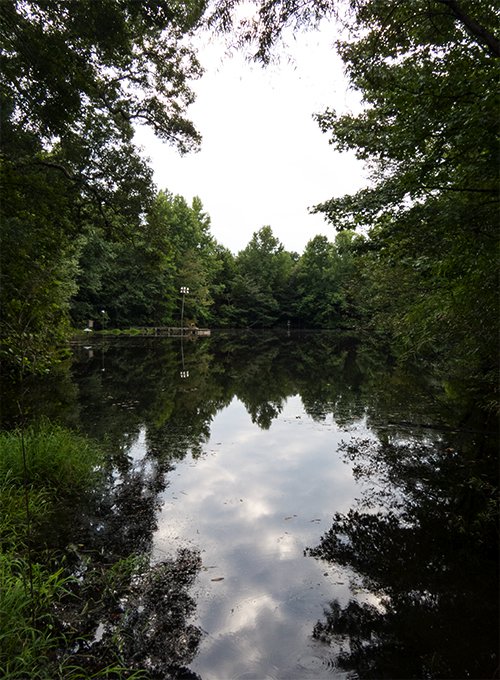
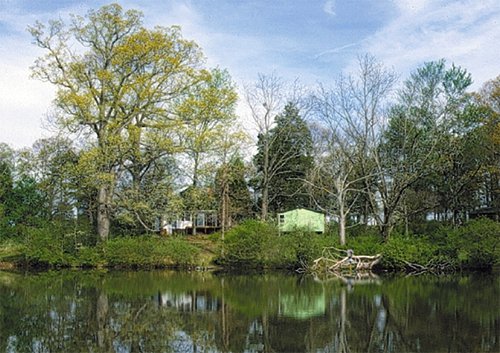
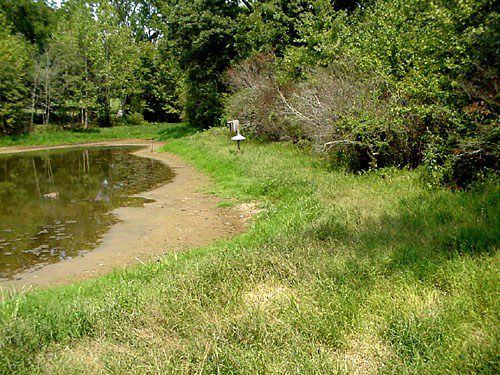
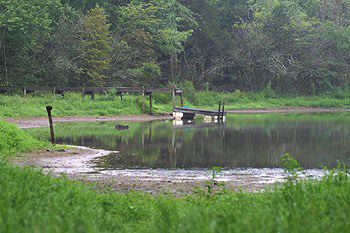 resulting in late summer water levels so low that 30-foot-wide mud banks were exposed and our fish and turtles and other aquatic creatures were forced to get quite chummy.
resulting in late summer water levels so low that 30-foot-wide mud banks were exposed and our fish and turtles and other aquatic creatures were forced to get quite chummy. 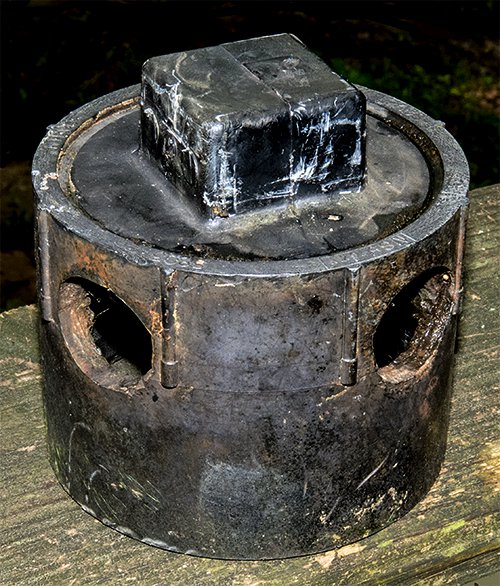 And then came 2013 with its cool spring and very-much-wetter-than-normal summer. Through 31 July this year the Center has recorded 36.81" of precipitation--far above York's annual average of 25.54" for the first seven months of the calendar year--and Hilton Pond has responded magnificently. For virtually the entire summer the water level has been at or near "full pond," with excess water draining off through four one-inch holes in a cap
And then came 2013 with its cool spring and very-much-wetter-than-normal summer. Through 31 July this year the Center has recorded 36.81" of precipitation--far above York's annual average of 25.54" for the first seven months of the calendar year--and Hilton Pond has responded magnificently. For virtually the entire summer the water level has been at or near "full pond," with excess water draining off through four one-inch holes in a cap 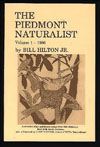 We were made acutely aware of this low place on the dam 'way back on the evening of 2 September 1986, when "The Rainstorm of the Century" inundated much of York County. Below is a shortened version of how we described the phenomenon in "The Piedmont Naturalist," our weekly column published in The Herald newspaper in Rock Hill SC:
We were made acutely aware of this low place on the dam 'way back on the evening of 2 September 1986, when "The Rainstorm of the Century" inundated much of York County. Below is a shortened version of how we described the phenomenon in "The Piedmont Naturalist," our weekly column published in The Herald newspaper in Rock Hill SC: "The first big lightning bolt didn't give an electrical jolt but did provide a shocking revelation of what had happened to Hilton Pond after four hours of very heavy rains. Amazingly, Wood Duck boxes whose support posts had been high and dry that afternoon were in danger of being swamped--meaning the water was already up at least three feet! Not until we saw the earthen dam, however, did the storm's full impact really hit home.
"The first big lightning bolt didn't give an electrical jolt but did provide a shocking revelation of what had happened to Hilton Pond after four hours of very heavy rains. Amazingly, Wood Duck boxes whose support posts had been high and dry that afternoon were in danger of being swamped--meaning the water was already up at least three feet! Not until we saw the earthen dam, however, did the storm's full impact really hit home.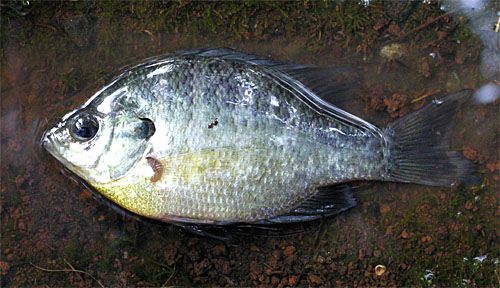
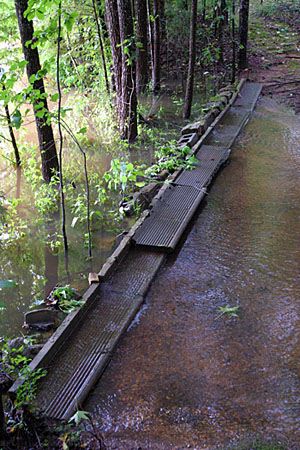

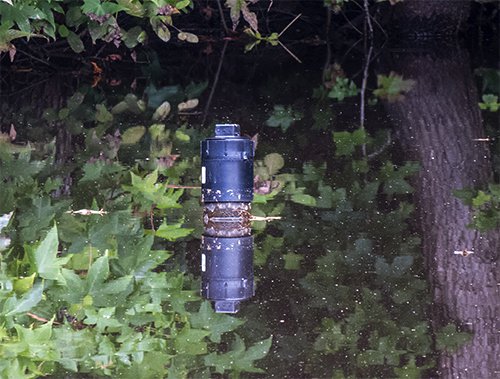

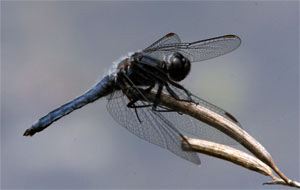 Aquatic plants and those that need wet soil such as Swamp Milkweed
Aquatic plants and those that need wet soil such as Swamp Milkweed 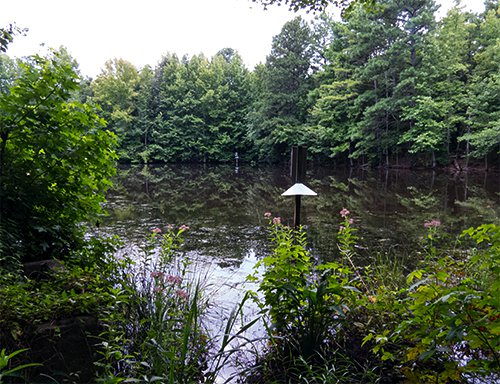








 Please report your sightings of
Please report your sightings of